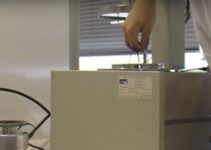
Changes in the arrangement of ordinary objects do not change their entropy. Entropy depends on the dispersal of energy at a specific temperature, not on a pattern. (Information “entropy” with no inherent or integral energy factor therefore is only related in form, and not in function, to thermodynamic entropy that must have an enabling factor of energy. {por Frank Lambert}
Tradução: Mudanças na organização de objetos comuns não alteram sua entropia. A entropia depende da dispersão de energia a uma temperatura específica, não de um padrão. (A “entropia” de informações sem fator de energia inerente ou integral, portanto, está relacionada apenas na forma e não na função à entropia termodinâmica que deve ter um fator de energia capacitador. {Traduzido por Prof. Luís Brudna}
“Entropy is disorder” is an archaic, misleading definition of entropy dating from the late 19th century before knowledge of molecular behavior, of quantum mechanics and molecular energy levels, or of the Third Law of thermodynamics. It seriously misleads beginning students, partly because “disorder” is a common word, partly because it has no scientific meaning in terms of energy or energy dispersal. {Por Frank Lambert}
Tradução: “Entropia é desordem” é uma definição arcaica e enganosa de entropia que data do final do século XIX antes do conhecimento do comportamento molecular, da mecânica quântica e dos níveis de energia molecular, ou da Terceira Lei da Termodinâmica. Isso engana seriamente os alunos iniciantes, em parte porque “desordem” é uma palavra comum, em parte porque não tem significado científico em termos de energia ou dispersão de energia. {Traduzidor por Prof. Luís Brudna}
Energy disperses from being localized to becoming spread out if it is not hindered. This is the enabling factor for all spontaneous physical and chemical events. Entropy change measures the dispersal of energy in a process: how much is spread out or how widely spread out that energy becomes. This is discussed in terms of macro thermodynamics, q(rev)/T, and molecular thermodynamics, kB ln [microstatesfinal / microstatesinitial ]. {Por Frank Lambert}
Tradução: A energia se dispersa de localizada para espalhada se não for impedida. Esse é o fator que possibilita todos os eventos físicos e químicos espontâneos. A mudança de entropia mede a dispersão de energia em um processo: quanto é espalhado ou quão amplamente dispersa essa energia se torna. Isso é discutido em termos de macro termodinâmica, q(rev)/T e termodinâmica molecular, kB ln [microestados final/microestados final]. {Traduzido por Prof. Luís Brudna}
Biochemistry students must use the concept of free energy change to understand reaction reversibility and the energetics of metabolism. The theory is founded on the Gibbs free energy function: ΔG = ΔH – TΔS. Reactant and product concentrations affect the ΔS term and therefore determine whether ΔG is positive or negative at a standard temperature. However, most biochemistry texts do little to connect the sign of ΔG in this function to the concentration variables that determine it, and instead rely exclusively on the equation to relate these parameters. This can have the undesirable effect of rendering the Gibbs equation irrelevant for these students. For the biochemistry instructor, the challenge is to clarify the role of entropy in determining reaction directionality without digressing into aspects of thermodynamic theory that would be more appropriately covered in other courses. A model to explain the concentration dependence of the ΔS term is presented in a format that is appropriate for an audience of biochemistry students, and the concepts are illustrated using an aqueous phase reaction, the anomeric conversion of glucose. {do site de Frank Lambert}
Tradução: Os estudantes de bioquímica devem usar o conceito de mudança de energia livre para entender a reversibilidade da reação e a energética do metabolismo. A teoria baseia-se na função de energia livre de Gibbs: ΔG = ΔH – TΔS. As concentrações de reagente e produto afetam o termo ΔS e, portanto, determinam se ΔG é positivo ou negativo a uma temperatura padrão. No entanto, a maioria dos textos de bioquímica faz pouco esforço para conectar o sinal de ΔG nessa função às variáveis de concentração que o determinam e, em vez disso, depende exclusivamente da equação para relacionar esses parâmetros. Isso pode ter o efeito indesejável de tornar a equação de Gibbs irrelevante para esses alunos. Para o instrutor de bioquímica, o desafio é esclarecer o papel da entropia na determinação da direcionalidade da reação sem se desviar para aspectos da teoria termodinâmica que seriam abordados de maneira mais apropriada em outros cursos. Um modelo para explicar a dependência da concentração do termo ΔS é apresentado em um formato apropriado para um público de estudantes de bioquímica, e os conceitos são ilustrados usando uma reação em fase aquosa, a conversão anomérica de glicose. {Traduzido por Prof. Luís Brudna}


